The sensational Sarah Lucas

Roula Khalaf, Editor of the FT, selects her favourite stories in this weekly newsletter.
The 14th-century church of St Michael’s in Framlingham, Suffolk, boasts an array of ornate tombs, including several Dukes of Norfolk and one Plantagenet princess. Sarah Lucas, whose studio sits in the same small town, is particularly keen to show me the details of these beautifully carved monuments — particularly the four lions that guard the remains of Anne of York. Lucas loves these. Is it because she is primarily a sculptor herself? Possibly. But it’s also, she says with a grin, because “they’ve still got their knob and balls!”.
Of course. You can take the girl out of London, or the whirlwind of the ’90s YBA scene, but you can’t quite take it out of the girl. The 60-year-old artist, alongside peers such as Damien Hirst, her ex-boyfriend Gary Hume or Tracey Emin, with whom she once ran The Shop, a proto-pop-up just off Brick Lane where they sold small works, revolutionised British attitudes to contemporary art. Just over 30 years ago, she read the works of Andrea Dworkin and started producing her most bracing pieces, upending the savage language of British tabloids or producing crude nudes from, for instance, Two Fried Eggs and a Kebab (1992). Critics heralded it as her feminist awakening, but in fact, says Lucas of Dworkin’s influence: “It made me realise, purely and simply, that there are many different ways to look at anything.”
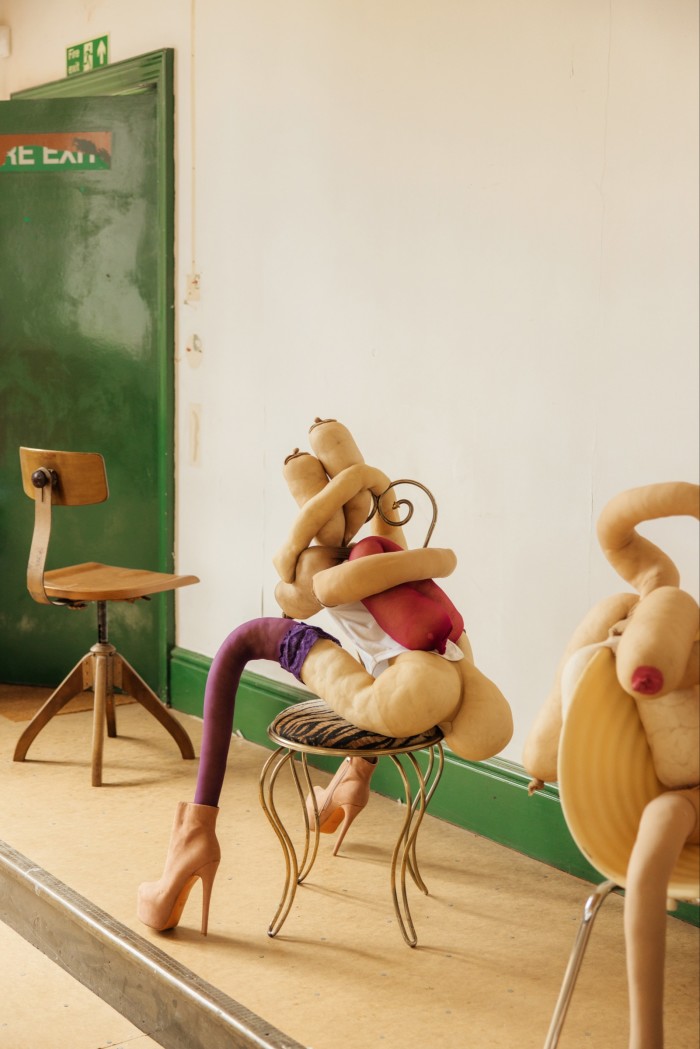
She has remained endearingly constant in her irreverence in the decades after, never losing her partialness to a bit of smut. “I probably haven’t changed much,” she confirms, sitting in her studio. “I’m not sure if that’s a good or a bad thing.”
Grey hair loose, large eyes beaming, Lucas is wearing a blue striped shirt with red bra poking out, trainers with neon-green socks and some extravagantly customised, patchworked jeans, which once belonged to her partner, the photographer Julian Simmons (“until he got fat”). Her workspace is a former village hall she took over a few years ago; until then, she worked solely at home, a few miles away, in the cottage formerly owned by Benjamin Britten that she shares with Simmons.
Along the edges of the walls sit works either finished, in progress or in embryo: a dresser stuffed with dozens of pairs of tights, casts of a high heel or a courgette on a windowsill, muddy clogs and, dominating one wall, a parade of Bunnies — one of her most enduring series. These sculptures, spooky, seated proliferations of legs and arms made out of said stuffed tights, are pure Lucas: sexy, humorous, weird, a bit melancholic; sometimes rough, sometimes beautiful, often both. She makes all these alone, with no assistant; occasionally, she ropes her partner or a mate in to help.
“I’ve never been really fancying any of the trappings much,” she says in a rigorously East End accent, her rapid-fire voice worn to gravel by decades of smoking (she still has a smoke and a drink every day). “In the end, it comes down to what you want to be doing with yourself, and I don’t want to be doing all that — you know, organising somebody. I just find it such an aggravation.”

Lucas is preparing for a vast new show at Tate Britain, Happy Gas. Its title is “probably something on telly that made me laugh”, she says — although she eventually concedes that it’s also about “being in a trance-like state, one way or another — being lulled into things, whether that’s because of how strong convention is, or whether it’s because of your habits, smoking or drinking . . . We’re all in a kind of fug of ideas and habits.” It could be her highest accolade yet, although considering she has had a retrospective at the Whitechapel Gallery, had a hit touring show in New York and Los Angeles, and represented Britain at the Venice Biennale in 2015, it arguably just adds to the list. For her friend, the gallerist Sadie Coles, she’s one of the most influential artists of her generation — “and that’s an international thing”, says Coles. “Wherever we show up with a Sarah Lucas sculpture, people immediately recognise it. It couldn’t be anyone else.”
The Tate show is not a retrospective, but a “survey”; several of Tate’s galleries will highlight new work made since 2020. “I wasn’t too keen [on a retrospective], because it’s like being in some kind of greatest-hits band or something,” Lucas growls. It’s “a bit melancholy”, she says, and she didn’t want to be thinking: “Oh — is that my whole life?” Instead, surveying the selection of Bunnies, one notices how bright and colourful they are. It started in Venice, where she decided to paint the Pavilion walls yellow. “Since then, I’ve really been grabbed by the colour thing . . . So much going on was very serious and anxiety-making in the world. I sort of had the strong reaction that we needed a bit more uplifting.”
Lucas is “very much a person on a pendulum” — the swings of which are “completely variable, but there’s definitely some kind of loop”. It’s because, she adds, “my feelings about everything in general are quite mixed”. She is not didactic: she wants her work to speak to lots of people, in lots of ways. “I quite like the fact that things can push a button — even if it’s not exactly the same button — with more or less everybody.”

Lucas grew up in Holloway, north London, the daughter of a milkman and a stay-at-home mother. She had, at best, “maybe a romantic idea of being a poet. I thought I’d quite like to be a writer.” She left school aged 16 with few qualifications, went travelling around Europe (she was pretty disappointed by the Eiffel Tower and the Mona Lisa), and eventually came back after a year, no closer to finding The Answer. A friend suggested art college, since she had always liked making things, and eventually she went to Goldsmiths, where Hirst, Michael Landy and Angus Fairhurst (another former boyfriend) went.
At Sensation, Charles Saatchi’s era-defining 1997 show of British contemporary art, her contribution was Au Naturel, an arrangement of melons, a cucumber and a bucket on a slumped mattress. There has always been a gut punch to Lucas’s best works, but, however “blokey” she says she is, the lairiness isn’t totally natural to her. She recalls assembling Au Naturel in a museum once, and being mortified when a group of pensioners walked past. “Even the first rude thing you make, the thought does go through your mind: ‘What’s my mum going to think of this?’”
Lucas’s mother was, says Lucas, “quite a weird mum . . . not very warm”. They became much closer after her father died, when Lucas was 21. Eventually Mrs Lucas came to several openings with Sarah, and “I’m sure she was quite proud in her way”. She could also “be quite a good art critic. The only thing is, if there was anything bad going on, she’d think I had something to do with it!”
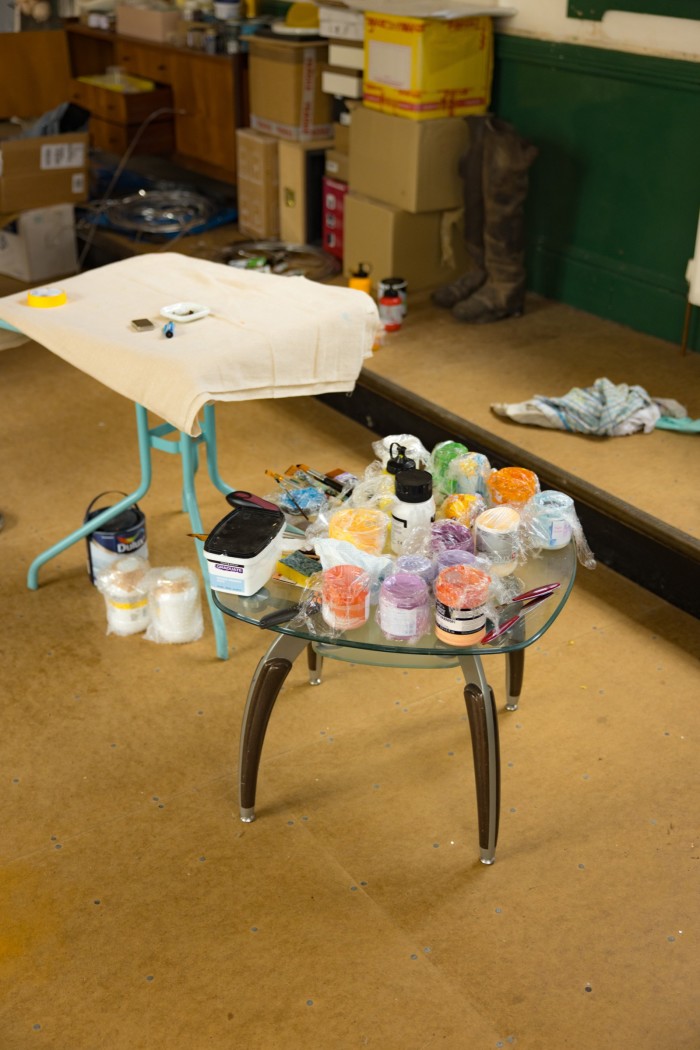
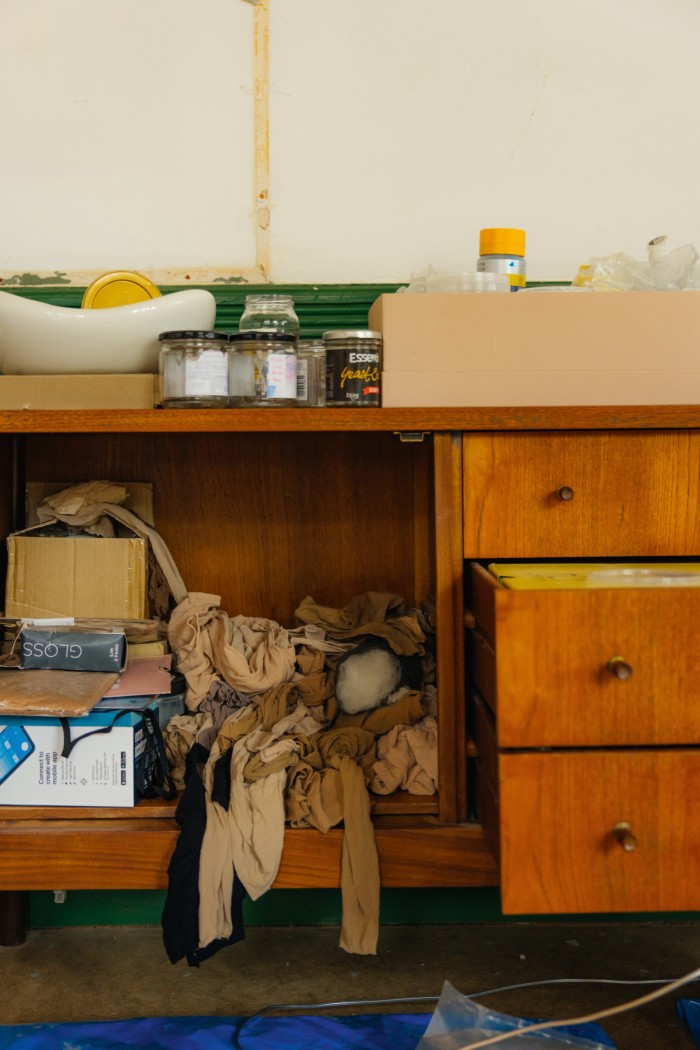
Coles first met Lucas over 30 years ago, when they were seated at the same table at a gallery opening, “and ours was the bawdiest, most raucous, most heavy-drinking table”, Coles says. She has been her gallerist since 1997; today, a Lucas photograph will sell for between £20,000 and £80,000, while a sculpture can stretch from £65,000 to £1.5mn. Asked to sum up her favourite Lucas moment, Coles is torn between “her stint behind the Colony Room bar” — a notorious Brit-art haunt back in the day — “when she was regularly barmaiding. That was quite fun. Or the opening of her British Pavilion at Venice. Because there was a real sense of: ‘Blimey, how did we get here?’ It’s incredible, for me, to see how far she’s got. It’s amazing.”
“Sarah is a radical,” agrees the artist Matthew Barney. “I consider her part of the resistance, even if she has developed a visual language over the years that speaks rather directly to the tradition and histories of sculpture.” Dominique Heyse-Moore, curator of Happy Gas, promises that “there’s a real, quiet respect for her work. She’s a real voice of reason among her peers.” Among the younger artists Heyse-Moore work with, she also notes “a real interest in Sarah. She’s someone who would influence them.”
Lucas and Simmons moved to Suffolk in the 2000s to find some calm (although all that is relative — she has still very much enjoyed boozing with the local farmers). The YBA era is far away, a potential albatross for any artist trying to be understood on their own merits; it is not a focal point of the new show, Heyse-Moore emphasises. As it happens though, Lucas has been to Brick Lane recently, “and it was like stepping into another dimension or something”, she says with wonder. Was there a twang of nostalgia for the olden days?
“Absolutely,” she nods. “I used to think, when I was a younger person, that the two things I really hate are sentimentality and nostalgia — but now I really like them.” In fact, when she compares then and now, “I find that a lot of the time, I prefer those times.” She is acutely aware of what a “blip” her breakout era was — “the circumstances of it being like that”. She means education being free, being able to squat or live cheaply in Shoreditch, “being able to get old shops or warehouses . . . All these rules and regulations now about fire extinguishers and insurance! Quite apart from having to pay school fees . . . That was a moment when it was possible, and it was a brilliant, brilliant moment. There was so much freedom in it, and so much fun!”

Could someone from her background have her career now? “I don’t think I would have done it. It’s just too hard a leap to take.” All these taxes, all these fines, she says: “I don’t see why it has to be spent on the roads, and more crap like that. Why can’t some of it be spent on something that’s important, like health, or education?” And it’s not just Britain that concerns her. “Have you read Yanis Varoufakis’s books?” she asks. “The first one I read was Adults in the Room. It’s really, really good at explaining economics. Nobody understands this stuff, and it’s so hard to understand it, and how sewn-up and seamless it is. And how treacherous it is for anyone who tries to make a sensible alternative.”
In Suffolk, Lucas “is living life completely on her own terms”, says Coles. “She’s completely in control.” She and Simmons have been together for 15 years. “We obviously get on — largely,” she says with a side-eye. She has never regretted not having kids. The only thing, she’s noticed, is that she feels she is slowly turning into her mother and he is turning into his father, so “sometimes when we argue, it’s like them arguing”. She, like her mother, is very impatient, and he, like his father, is very deliberate. “But you can’t eradicate those things,” she says. “You can make modifications and be better, but you can’t eradicate them.”
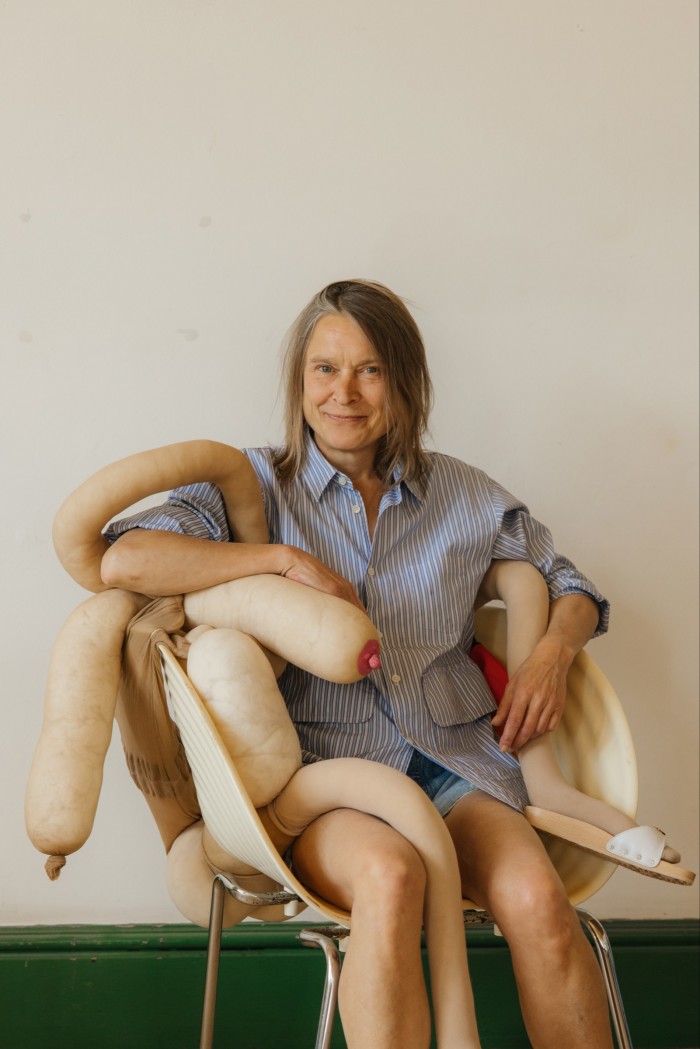
By now we have been talking for over an hour, and Lucas would like to smoke the rollie she’s long been rolling and grab some lunch. The Bunnies, left in their parade, will eventually be auditioned for the Tate show. She mentions, almost in passing, that it might be quite nice if we didn’t use a photograph that makes her look too dour or intimidating. It doesn’t seem to be vanity — more a hope that she might be seen afresh. And it makes me think back to that title, Happy Gas. It definitely has an ironic, very Lucas edge to it — “it immediately makes you think of unhappy gas”, she had said earlier. But what if there were something even more radical to it? What if Sarah Lucas is simply seeking joy?
Sarah Lucas’s defining work
1996
Self-Portrait with Fried Eggs

1997
Pauline Bunny

1997
Got Salmon On #1

2015
Me (Bar Stool)

2018
Exacto

2019
OOPS!

2020
HONEY PIE



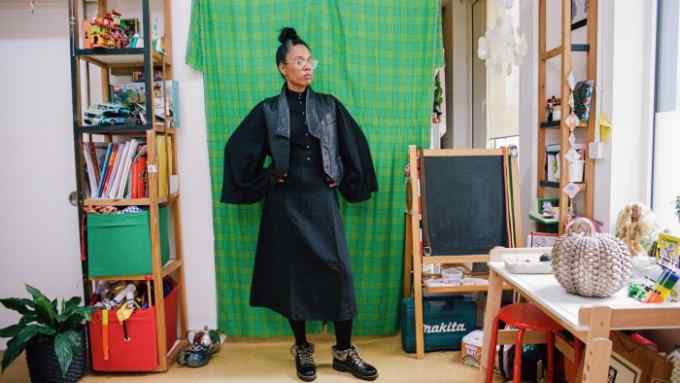
Comments